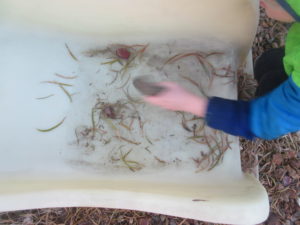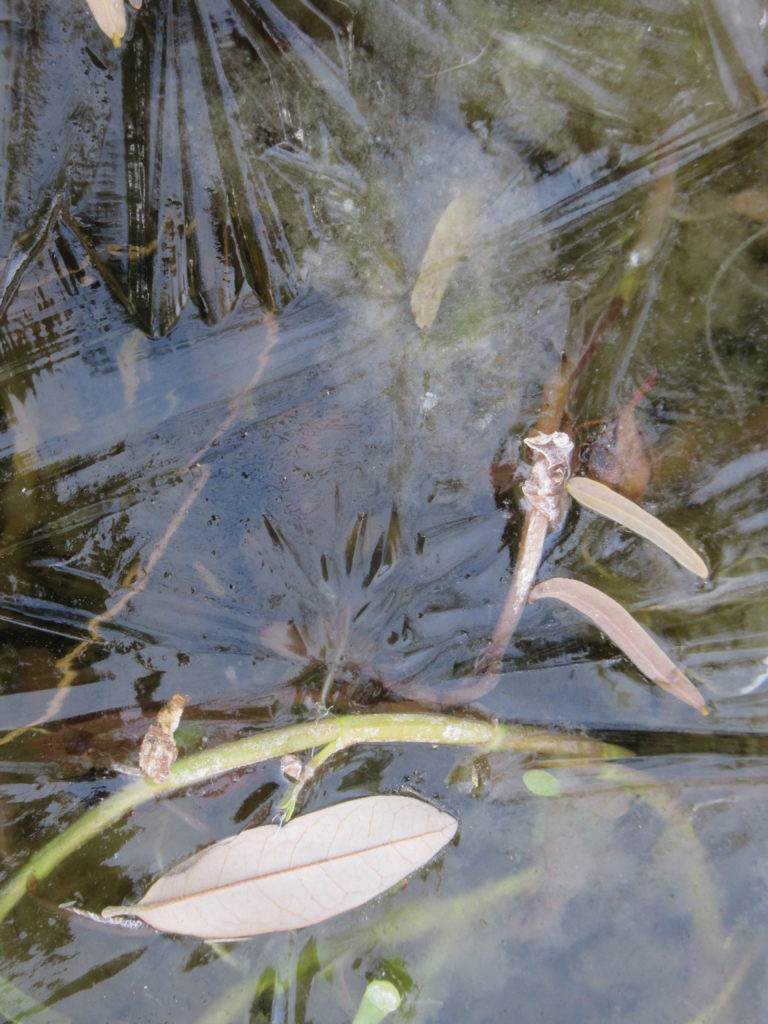“Let’s go see if there’s ice in the pond!” and outside my boys go first thing on a frozen morning. Sometimes it’s a fight for who gets to break the ice first. Sometimes they are first mesmerized by trapped bubbles and crystalline creases. The event of finding solid water in Tucson is celebrated only a few times a year. 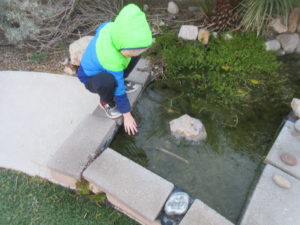
This winter, there were a couple freezing nights in January. That means the thermometer dipped to 32o F or just below for long enough to turn a layer of standing water solid, create crystals from condensation, and burst cells within the outer leaves of cold-sensitive plants. 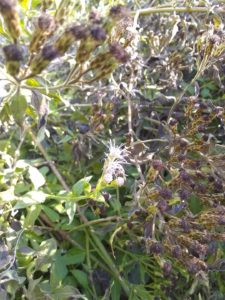
Some plants are just fine. Snap peas, broccoli, and mint if the frost is light, remain green and growing.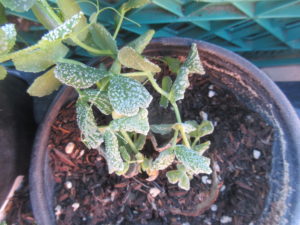 Cool-season veggies thrive in Tucson’s cool winters. Snapdragons and sweet alyssum
Cool-season veggies thrive in Tucson’s cool winters. Snapdragons and sweet alyssum 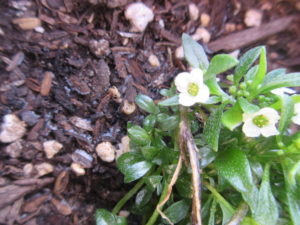 keep blooming, alongside wild poppies and lupines
keep blooming, alongside wild poppies and lupines 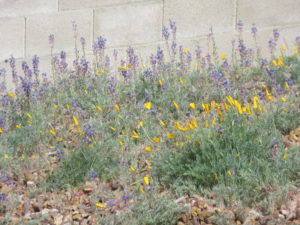
Contrary to popular belief, many desert trees DO loose their leaves in winter. Desert Willow goes first in my yard. 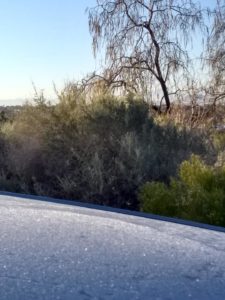 Mesquite, oaks, and palo verde become sparse and spindly when nights get cold – in late December and January instead of fall. But they are dormant, not dead.
Mesquite, oaks, and palo verde become sparse and spindly when nights get cold – in late December and January instead of fall. But they are dormant, not dead.
Yes, frost can kill – exposed leaves and branches, everything above ground, or the whole thing. I like the light freezes, like those during our Winter Break, for letting me know which plants I should cover in a hard freeze. Mexican sunflower, blue mist, strawberries, pentas, and even the native narrow-leaf milkweed all had leaves turn yellow or brown then dry up completely. I also like looking for stubborn survival after a night that dipped below 32o. The pentas sent new leaves up through the soil to replace dead, frozen branches above. The tomatoes ripened despite the whole parent freezing to a crisp – an annual plant putting forth its next generation. 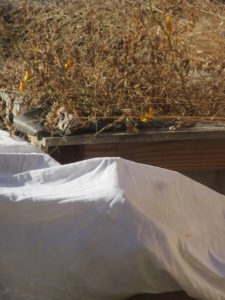
Last Wednesday morning brought the first hard freeze of the season, 25o F, as forecast. The pond ice was thick. A bear “bath” left out became a fascinating new toy. 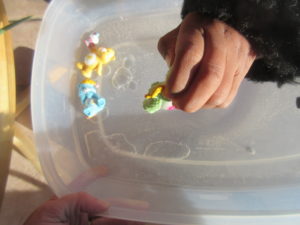 Oops, I forgot about the honeysuckle. From years past, I know the roots will sustain it, but the cheerful, hummingbird-magnet shrub will have a lot of re-growing to do.
Oops, I forgot about the honeysuckle. From years past, I know the roots will sustain it, but the cheerful, hummingbird-magnet shrub will have a lot of re-growing to do. 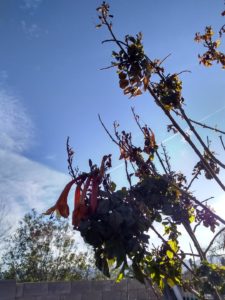 I remembered to cover all my patio pots – the lantana and the milkweed, plus some succulents and freshly-repotted herbs. The sporty surviving undergrowth and optimistic new growth in the butterfly garden and kids’ garden also got protection. We really do want to eat strawberries this spring!
I remembered to cover all my patio pots – the lantana and the milkweed, plus some succulents and freshly-repotted herbs. The sporty surviving undergrowth and optimistic new growth in the butterfly garden and kids’ garden also got protection. We really do want to eat strawberries this spring!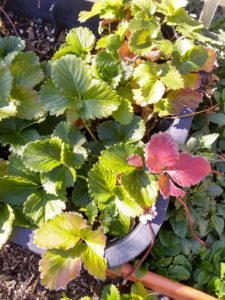
Mine is an unapologetic Frozen family, belting out Disney songs and quoting the movies for a good six years running. In our Southwest desert reality, natural ice is a treat. Even my efforts in the garden are something to look forward to each winter. Freeze warnings are an opportunity to shiver while spreading sheets, seek the beauty of ice crystals in the morning light, 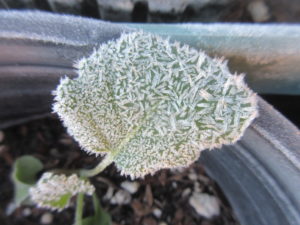 discover each plant’s place in the cycle of seasons – and sprinkle some magic into my kids’ memories.
discover each plant’s place in the cycle of seasons – and sprinkle some magic into my kids’ memories.
